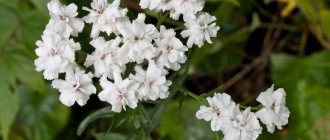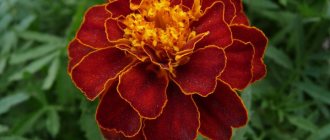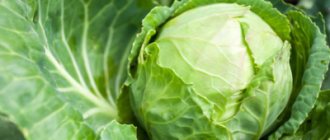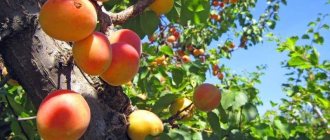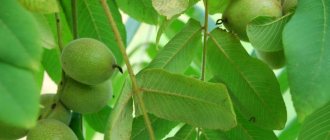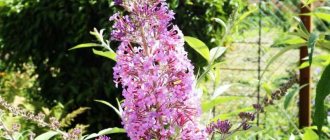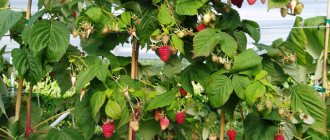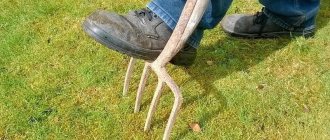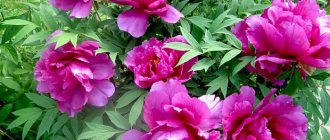Lawn definition
A piece of land with an artificially created cover consisting of herbaceous plants is the general definition of a lawn. The grass surface is created by the hands of specialists or experienced amateurs. The grass is periodically mowed. As a rule, seeds of suitable plants are specially sown. Lawn coverings are designed for various purposes. They can serve as a background for other decorative plantings, or be an independent phenomenon that decorates the space.
Ordinary or garden lawns
A lawn that can withstand a certain load, but at the same time is decorative enough to remain a decoration of the site, does not require complex care and creates a classic covering - this is an ordinary or garden lawn. These are the kind of lawns that are created in city squares and parks; they are stable, but lack the endurance to heavy loads and absolute flawlessness; they are a kind of intermediate option between sports and parterre lawns, a compromise between aesthetics and practicality.
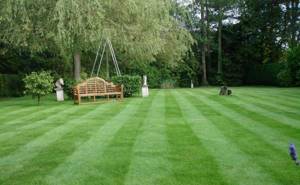
Ordinary lawn
The main advantages of ordinary lawns
- versatility;
- unpretentiousness;
- the ability to create an emerald carpet on complex terrain;
- availability of seeds.
Ordinary lawns are created mainly from common bentgrass and field grass . To enhance hardiness, red fescue , perennial ryegrass and meadow grass .
Varieties
In addition to their decorative function, lawns can also be special, designed for specific purposes. And therefore they are divided into varieties according to the types and types of herbaceous plants used.
Did you know? Roof lawns have a long history of use in Norway and the Faroe Islands. From time immemorial, lawns have helped to disguise a home, and caring for them has always been very simple, so they still find their use today.
Type
By type of use, lawns are divided into the following categories:
- decorative;
- sports;
- special lawns.
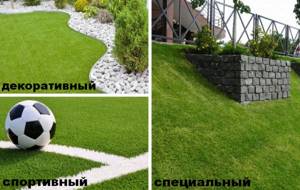
Decorative landscape elements are created in landscaping areas. And this type can be divided into subtypes:
- ground floors (uniform, ceremonial);
- ordinary (classic gardening);
- flowering (or Moorish, that is, including cereals and flowering plants);
- forbs;
- meadows used in meadow parks.
Learn how to grow a lawn in a weed-filled area.
The ground floor subtype is suitable for areas in front of theater facades and other similar architectural elements. The requirements for such a lawn are significant, and care is commensurate with the desire for an ideal appearance. The density of the grass, the uniformity of germination, and low height are the main characteristics of the parterre subtype. For it, not only the most popular and convenient meadow bluegrass is used, but also red fescue.
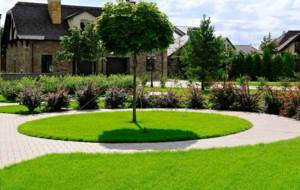
Landscape lawn is a common type of cover. Meadow is somewhat different from the previous one: it is formed by improving the appearance and condition of natural herbs. The Moorish subtype is used in the same places where the gardening subtype is adopted. The main difference is the presence of flowering plants and cereal crops. Forbs are easy to care for. It should be watered and mowed more carefully, that is, not too short.
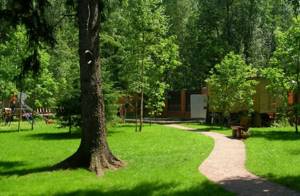
Sports lawns are installed in stadiums, football fields and tennis courts and other areas for sports games. Strict requirements are applied to such surfaces, since sports turf experiences significant loads. Grass mixtures for covering such areas must be fast-growing, well-tolerant of drought and snowless winters, as well as with a strong root system and a high recovery rate.
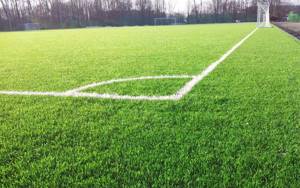
Special lawns are formed for airfields, installed at hydraulic structures, on highways, in sanitary protection zones, and in industrial areas. Their task is to consolidate the soil, prevent the appearance of dust and general environmental pollution.
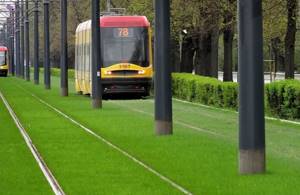
According to the herb used
Based on the vegetation used, lawns can be divided into two separate categories: grass mixtures and monocultures . The latter type is expensive and special - it is used for sports fields.
Did you know? The lawn near the Australian Parliament is the “smartest”: it is looked after by a high-tech system that waters all 4 thousand m².
Monoculture is difficult-to-maintain vegetation of one variety. It is suitable for a certain soil and requires the necessary lighting and watering. Monoculture elements can be laid in rolls, rather than just sown with the seeds of a specific grass. The cost of the roll version is significant. Grass mixtures are considered in more detail.
This category is divided into several subtypes:
- Universal . They grow quickly and their price is low. You can walk on them. Requires constant trimming.
- Wear-resistant . Ideal for active entertainment. This subtype is cut more often than others.
- Elite . It is important to take care of their condition regularly: water them frequently and avoid trampling. This lawn is characterized by rich color and uniform seeding.
- Sun-loving . Resistant to heat and lack of shade.
- Shade-loving . Designed for areas with high humidity.
- Frost-resistant . They can withstand winters with low temperatures and lack of snow cover.
- Fast growing . This subtype is used to level and correct damaged areas. In addition to the actively growing herbs themselves, this type includes fertilizers and stimulating microelements.
- Slow growing . The best option for those who cannot constantly care for the lawn, and especially mow it often.
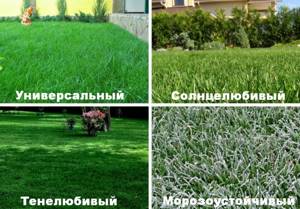
Lugovoy
If you want to create the effect of picturesque “desolation” in some corner of the dacha, if you are afraid of the thought of spending time, money and effort on the lawn to the detriment of the efforts in the vegetable garden, orchard and flower garden, you should choose the meadow option. It combines decorativeness and practicality - you can relax on it, play with the dog, and not be afraid to walk. It often contains ground cover plants, such as clover, creeping wheatgrass, timothy, as well as bluegrass and ryegrass.
A variety of meadow lawn can be called Moorish, the main difference of which is the abundance of flowering plants and a smaller number of cereal grasses. Marigolds, flax, cornflowers, carnations, snapdragons, snap peas, irises, daisies and bluebells - this is just a miniature part of the set of what may be in it.
A Moorish or meadow lawn, created according to all the rules, needs to be trimmed only 2-3 times per season. Even weeding is not necessary, since the riot of selected plants suppresses them.
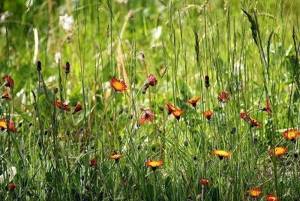
To summarize, we can say that when choosing a type of lawn for a summer house and the grasses that form it, it is important to wisely correlate your desires and capabilities. You should plant one that you can fully care for. After all, it is much better for a summer cottage to be decorated with a meadow that is elegant in its simplicity, albeit wild in appearance, than for a neglected emerald carpet that claims to be aristocratic.
Lawn functions
Not only the special decorative effect, grace and elegance of a uniform coating are its main purpose.
In terms of functionality and impact on the environment, this landscape solution fulfills other important roles:
- sanitary and hygienic (air purification, sound absorption);
- wellness (oxygen production, relaxation, helping to cure allergies and respiratory diseases, anti-stress effect);
- impact on the ecological situation (filtration of water by rhizomes, combating soil erosion, protection against soil erosion, neutralization of phosphates and other elements);
- climatic (humidifying and cooling the atmosphere above the lawn);
- recreational (rest and improvement of the psychological state of people);
- aesthetic (highlighted separately, since decorativeness, for example, in an urban environment, has a more extensive impact on human perception).
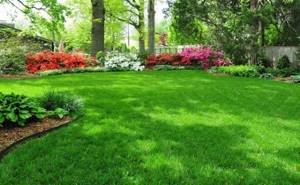
Watering, watering and watering again
The first week it is necessary every day so that the ground under the lawn is always moist. At this stage, the appearance of mushrooms is possible - this is the norm. Mycelium is always present in the lawn, but the appearance of fruiting bodies (the mushrooms themselves) is possible only with excess moisture. At the end of the week, you can notice the appearance of small white roots if you lift the edge of the layer.
The second week we water it every other day and, perhaps, slightly mow it and trim it. It is better at an angle to the direction of installation. I would compare the post-installation period to the rehabilitation period, when the “patient” is already better, but the risk of losing him is very high. Rest and plenty of fluids are needed.
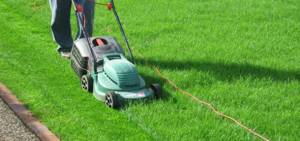
Lawn installation methods
All possible options for organizing a landscape decorative or special element have existed for a long time and are used by people both in gardening space and in personal areas - gardens, dachas, local areas.
Essentially, there are three ways to arrange a lawn in your chosen location:
- sow seeds;
- lay out the finished rolls;
- use hydroseeding of grasses.
Read about growing a lawn on a windowsill.
In the first case, the material is sown on prepared fertile soil. It is important to select vegetation varieties (cereal mixtures) according to the conditions, correctly calculate the sowing rate, control weeds and regularly and carefully water the landscape area.
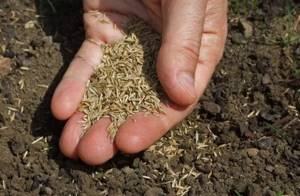
For a private space, the best option is a roller one . This method of organizing the lawn surface is less demanding on the fertility of the soil. The roll sizes are standard: 40 cm by 200 cm with a thickness of 2.5 to 3 cm and a weight of one finished element from 17 to 25 kg.
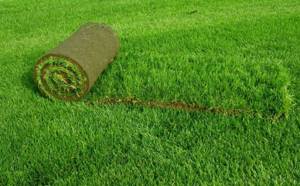
The third method is hydroseeding, which is performed by distributing a solution under pressure over the prepared area. This special solution contains both seeds with nutrients and water with binding elements. This type of lawn management is expensive and requires appropriate equipment. It is used in difficult places (slopes of ravines and hills, large areas that are difficult to sow or lay in rolls).
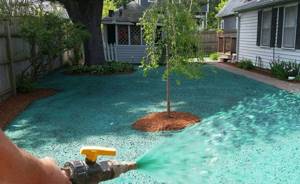
Types of lawns: photos and characteristics
According to the generally accepted classification, all types of lawns, depending on their purpose, are divided into:
- - parterres;
- - meadow;
- - floral or Moorish;
- - decorative;
- — park (universal, landscape);
- — sports;
- - special.
According to the method of installation, the following types of lawns are distinguished, namely:
- - classic sowing - created by sowing grass and flower seeds directly into the ground;
- - roll - arranged using ready-made lawn layers, spread on the surface of the prepared soil;
- - on lawn grates - essentially, which are the mentioned sowing type with the only difference: in this case, the grass is planted not just in the ground, but in special cellular plastic structures (so-called lawn grates).
Judging by the names presented in the first list, it is not difficult to guess the purpose of this or that type of lawn. Let's try to take a closer look at the most popular of them.
How does lawn grass reproduce?
The main types of propagation of herbaceous lawn plants are vegetative and seed . The last method of propagation is used for the first landscape decorative element. It is also used for sowing.
Important! To stimulate the vegetation of such shoots, vertical cutting is useful. It is the rhizomes and stolons that are trimmed, so that all shoots and roots grow more actively.
However, its effectiveness is possible when the seed reaches the soil depth required for germination (up to 15 mm), so it is optimal to use additional sowing in trampled areas, completely damaged or sparse areas. Vegetative propagation is more efficient, especially if it is stimulated.
Separately, we should consider the types of grass vegetation in the lawn:
- tillering;
- reproduction by stolons;
- thickening with rhizomes.
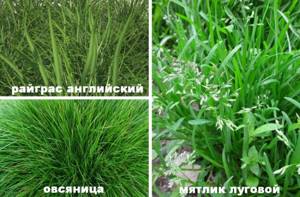
During tillering there are no vegetative shoots, but only an increase in the size of the bush. New rhizomes are not formed. The main species suitable for such growing season is perennial chaff (otherwise known as English ryegrass). On stolons (shoots extending from the rhizome that spread along the surface of the soil) new roots are formed. Thus, it is common for fescue to reproduce independently. Similar processes - rhizomes - spread directly into the top layer of fertile soil. New rhizomes also appear on these shoots. The main grass is bluegrass.
You will be interested to know how to care for a rolled lawn.
Special
Special lawns are usually used when improving playgrounds and places for active recreation. Their distinctive features are resistance to trampling and the ability to quickly recover from external influences.
The composition of the mixtures usually includes fast-growing cereals with elastic, wide shoots. They also contain traditional meadow bluegrass, meadow foxtail, clover, perennial ryegrass and other turf-forming plants.
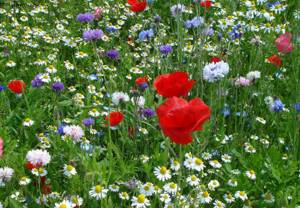
Helpful tips: what type of lawn to choose?
When choosing a particular type of lawn for a summer residence, one should proceed from the area, style and purpose of the territory on which it will be developed. Thus, when improving children's playgrounds and places for active recreation, it is better to give preference to sports or special lawns, and when improving the facade of a dacha, it is better to give preference to parterre or universal ones.
It is equally important to take into account the characteristics of the herbs used in the mixtures - they must be suitable for the climate of your area. The height and quality of the grass they produce, as well as their drought and frost resistance, play a role.
What deserves special attention is how much time you plan to devote to caring for the “green carpet” on your property. For example, the parterre option requires systematic and careful care, while the meadow or Moorish ones are considered the least demanding in this regard.
Necessary care
Lawn care involves many important procedures. This includes watering, mowing, soil aeration, and fertilizing.
Each point is considered separately:
- A haircut. The first one is very important. It is carried out when the stems grow to 10–15 cm. All mown grass should be removed. Next, the green zone is mowed 1 or 2 times a week (if weather conditions require it). When cutting, it is necessary to take into account the direction: first cut, for example, from north to south, and then, accordingly, in a perpendicular direction. The cutting height is 4.5–5 cm. After such cutting, the lawn is combed with a special rake.
- Watering. Produced after three dry days in summer and five in spring. Without irrigation, the grass loses its elasticity. For best water penetration, it is important to pierce the felt of the cover. It is important to water during cool times of the day. Optimal watering is to moisten the soil up to 20 cm deep. From 5 to 12 liters of water are used per 1 m². Frequent and weak watering is harmful, unproductive and leads to the development of superficial rhizomes.
- Soil aeration. The turf needs to be pierced to improve the balance of water and oxygen. If aeration is neglected, mosses appear and bushes die off because moisture and air are unevenly distributed.
- Fertilizers. Before applying them, the lawn is mowed, the fertilizing itself is done after the dew has disappeared, and after fertilizing the grass, it is watered. Further haircuts are done no earlier than after 3 or 4 days.
- Features of care in spring and autumn. It is important to comb out the grass after the snow melts and repair damaged areas. From April to May, mulching is carried out, during these months they fight weeds and apply fertilizers. And in the fall, it is important to remove foliage from the area, and then completely avoid any mechanical impact on the surface.
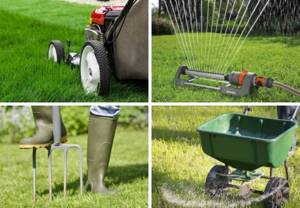
Some types of lawns are suitable for experienced gardeners in any area, while others are only suitable for special, serious areas. However, every owner of a private space for recreation and planting can learn how to plant lawn grass and care for it, following all the necessary rules and regulations. The decorative nature of a landscape element is not its only advantage. It can be very beneficial for the natural environment and human health.
Video:
Planting a lawn. There are many things to consider to ensure that your lawn grows smooth and enjoys many years of enjoyment. Let's talk about how to properly sow a lawn and what care it needs afterwards.
Ecological parking. An eco-parking area is a piece of grass where you can park your car. In order for this area to always be beautiful, it is necessary to properly lay the lawn lattice. We'll show you how to do it.
Lawn care. Tips from a landscape designer. There are practically no garden plots without a lawn. Therefore, do not underestimate the importance of caring for this “basic” element of any landscape. Moreover, maintaining a lawn in decent shape is quite labor-intensive: it is important to follow the rules that landscape designer Ekaterina Lokshina will share with you.
The nuances of autumn planting flowers in flower beds and under the lawn. When planting ornamental plants on a site, you need to know a large number of nuances. This story contains two spectacular techniques from landscape designer Alexey Korovin.
Choosing a gas mower and accessories for it. A lawn mower is one of the most popular garden tools. We will talk about gasoline lawn cutters. Typically, gardeners choose the most budget-friendly version of this unit, however, if we look at other models, we may be surprised by the additional capabilities of the tool.
Robotic lawnmowers. Choosing a garden assistant. Instead of trudging around with a manual lawnmower, it's better to go with the times and invest in a robotic lawnmower. An expert in the field of robotics will talk about this garden assistant, show it in action, and also review the most popular models of automatic lawn mowers.
